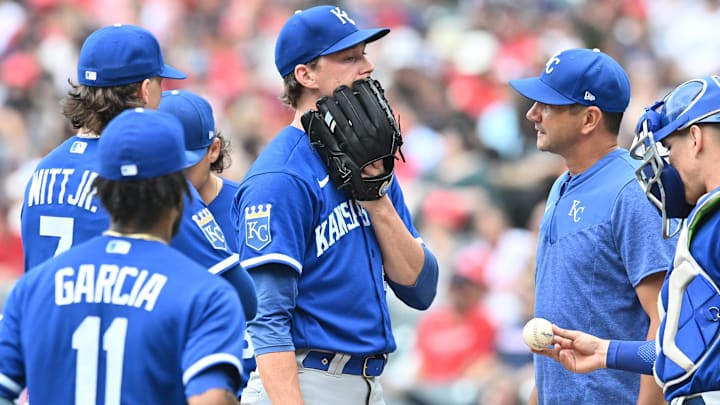Welcome back to "Buck the Trends," our series honoring late Kansas City legend Buck O’Neil. This series considers current market trends and explores how the KC Royals could buck them by moving in a different direction. Today, we examine how the team has lowered its WHIP.
In November, Buck the Trends looked at the importance of WHIP to the Royals' future. Because the 2023 Royals' 1.407 WHIP ranked 23rd in the majors, the club's philosophical approach to starting pitching needed significant change. Has it changed at all this season?
Brian Sweeney and the KC Royals starters have made key adjustments
There’s good news on this front. It’s pretty obvious that general manager J.J. Picollo also identified the WHIP issue. He and pitching coach Brian Sweeney have done a great job making several key adjustments — starting pitchers have averaged 1.219 WHIP through Monday. The biggest improvement has been Brady Singer, whose current 0.764 is fifth in the American League.
But WHIP isn’t the only statistic the Royals have suddenly turned around. Kansas City starters are flat-out preventing the home run ball, a major change from 2023. Royals starters have allowed .49 HR/9 this season. The team as a whole has done well in this category, currently locked in a two-way tie for first at .5 HR/9.
The results are great in this small sample size: KC is above .500 for the first time in two years. The pitchers, particularly the starters, are doing a great job keeping the offense in the game. But how did that happen? What specific adjustments have been made?
